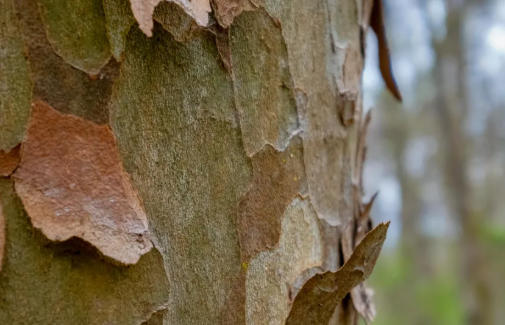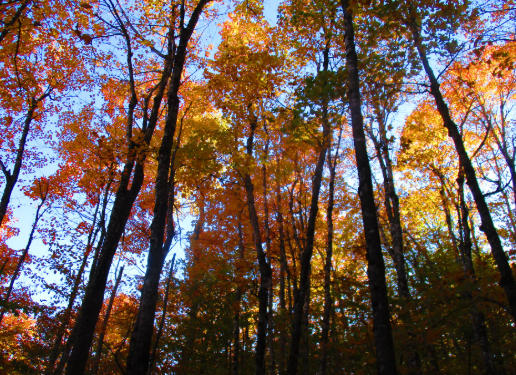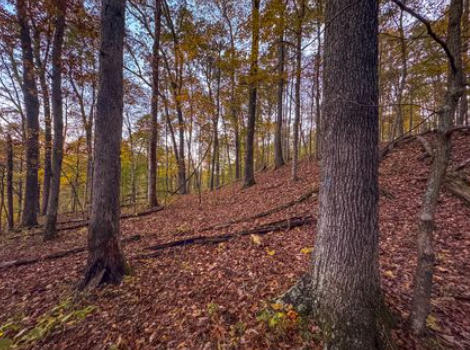Views: 222 Author: Rebecca Publish Time: 2025-10-31 Origin: Site











Content Menu
● Understanding Hardwood Timber Value
>> The Benchmark: 2025 Price Outlook
● Comprehensive Factors Influencing Timber Worth
>> 1. Timber Species and Quality
>> 2. Timber Volume and Log Size
>> 3. Stand Composition and Age
>> 4. Accessibility and Site Logistics
>> 5. Market Demand and Economic Trends
>> 6. Environmental and Regulatory Factors
>> 7. Sale Method and Negotiation
>> 8. Seasonal and Weather Effects
● Methods of Valuing Hardwood Timber
>> Comparable Sales (“Comps”) Method
● Example Hardwood Timber Value Calculation
● How to Maximize Hardwood Timberland Returns
>> Strategic Management Practices
● Common Pitfalls in Timber Sales
● Regional and Global Market Forces
● Real-World Timberland Sales & Current Trends
● FAQ
>> 1. What is the average value per acre of mature hardwood timber?
>> 2. Which hardwood species are the most valuable?
>> 3. How is hardwood timber volume measured?
>> 4. How does market volatility affect timber values?
>> 5. What are the most common mistakes when selling timber?
Determining the value of hardwood timber per acre is an essential yet nuanced process for landowners, investors, and forestry professionals. Hardwood stands are prized for their use in high-end furniture, flooring, veneers, and specialty woods, making them more valuable than many softwood forests. The price per acre for these resources can vary dramatically based on species, timber quality, local infrastructure, and ever-changing market trends. This guide takes a deep dive into all the elements affecting hardwood timber valuation, offers practical calculation methods, explores key regional differences, and provides actionable insights for maximizing the return on your timberland investment.[1][11][12]

As of 2025, the market value of hardwood timberland in the United States generally ranges between $3,000 and $5,000 per acre for quality stands, with exceptional sites reaching even higher. Premium species such as oak, walnut, cherry, and hard maple in competitive markets can command prices beyond $6,000 per acre, especially where timber is mature, healthy, and accessible. Meanwhile, lower-quality or less accessible stands may bring $1,500–$2,500 per acre.[4][11][12]
The type and grade of hardwood species on your land are the biggest drivers of value. Species like black walnut, white oak, cherry, and hard maple fetch some of the highest prices due to their popularity in furniture and specialty wood markets. In contrast, woods like poplar or birch generally sell for less.[6][4]
- High-grade lumber is straight, knot-free, and free of disease or defects. Logs with bends, rot, or old metal (like fencing wire) are heavily discounted or sometimes unsellable.[4]
- Buyers inspect both visible attributes and hidden defects, such as interior rot or mineral staining.
More timber volume per acre equals higher potential revenue. Volume is measured in board feet or tons, with larger-diameter logs often commanding higher unit prices because they yield more usable wood after milling.[8][4]
- Professional “timber cruises” help estimate stand volume accurately.[8]
- Logs over 16 inches in diameter are typically much more valuable than smaller logs.
A stand's structure—species diversity, age classes, spacing, and tree health—affects both growth rates and marketability. Mixed stands with a good balance of high-grade species and mature trees are ideal. Too much crowding lowers timber quality, while excessively open stands under-produce per acre.
Timber that's easy to reach with roads and good terrain is more valuable due to lower harvesting and transportation costs. Steep slopes, wet ground, or remote locations can reduce net value by increasing operating costs.[7]
- Proximity to sawmills: Reduces logistics expenses and lifts the stumpage price offered.[11][12]
- Harvest scale: Larger, consolidated timber sales draw more buyers and better prices compared to piecemeal jobs.[4]
Timber is a pure commodity—subject to price swings from both local and global forces. Booming construction and furniture industries push demand higher, as do international exports, while recessions or housing market slowdowns can drive prices lower almost overnight.[12][13]
- Trade agreements, tariffs, and global transport costs significantly affect price trends.
- Domestic policy changes, like new building codes or regulatory restrictions, can increase or depress demand.
State and federal policies, conservation easements, and sustainability certifications all play into the land's value. Management for wildlife, water quality, and compliance with “best management practices” may be required. Timber stands certified by FSC or similar organizations can access specialty markets or price premiums.[7]
The way you sell your timber matters. Using sealed bids, open markets, or negotiating with trusted buyers affects the price you receive. Forestry consultants can solicit competitive bids to maximize your sale price and protect your interests in contract terms.[7]
Logging is seasonal—wet weather can limit access and reduce prices, while dry seasons often bring easier, less costly harvests. Extreme weather events (wind, ice, pests) can also affect both current and future value.[2][7]
This is the most accurate technique, relying on a field inventory (“cruise”) of your timber to measure volume, species composition, and quality. The total merchantable volume is multiplied by applicable stumpage prices (the value paid for standing timber).[6][8]
This approach estimates timberland value by projecting net income from timber sales, hunting leases, or other forest uses, then applying a capitalization rate (similar to real estate income valuation).[6]
Recent sales of comparable timberland are analyzed, with adjustments for differences in species, age, location, and production potential. This is commonly used in the real estate industry, but may be less accurate when markets are volatile or unique timber stands are involved.[6]

Suppose you own a 10-acre woodlot with mostly mature black walnut, estimated by a forester to contain 12,000 board feet per acre. If the current average price for walnut is $3,800 per 1,000 board feet, then:
Value per acre=12,000bd-ft/1,000×$3,800=$45,600(total stand value)
Value per acre=$45,600/10=$4,560(per acre)
Repeat this for each species in the stand, aggregate the total, and adjust for accessibility and quality.[4]
- Regularly thin overcrowded stands to improve growth rates and timber quality.
- Favor high-value species during replanting or natural regeneration.
- Apply pest, disease, and invasive plant controls.
- Monitor timber market reports to sell during price peaks.
- Explore non-harvest income sources, such as hunting rights or leasing for recreation.[12]
- Engage forestry consultants to time sales effectively and navigate complex contracts.
- Seek certification (FSC, SFI) to enter premium markets.
- Balance immediate revenue with long-term productivity and environmental protection.[7]
- Selling “on shares” without a forester's advice: Can result in less money for landowners.
- Failure to secure multiple bids: May leave significant money on the table.
- Neglecting contract terms: Poorly written contracts can expose you to liability or timber theft.
Always use professional foresters and legal counsel for significant timber transactions.[5][12]
Timber values can be volatile due to international trade policies, climate changes, and evolving consumer tastes. In recent years, tariffs or trade restrictions have especially affected export-oriented regions, sometimes resulting in sudden price drops for certain hardwoods. Conversely, U.S. domestic demand for luxury flooring, cabinets, and specialty products is buoying hardwood value across much of the Midwest and Northeast.[13][12]
- Q3 2025: Mixed hardwood sawtimber averaged about $31/ton nationally, slightly below Q2 but up from 2024.[13]
- Buyers are concentrating on fewer, larger sawmills; land access and log size remain top concerns for pricing.
- Certification and sustainable forestry demand are steadily rising, opening new market opportunities for “green” timberland owners.[7]
Hardwood timber per acre can range from $3,000 to $5,000 or more, based on a complex interplay of species, volume, quality, age, management, and current market trends. High-value stands with mature, premium species, healthy structure, and good access often net the best returns. Landowners are best served by hiring a professional forester, carefully surveying their timber, and leveraging up-to-date market knowledge to make informed decisions. Strategic, sustainable management not only protects land value but enhances it for future generations, ensuring lasting profitability and ecological health.[1][5][11][8][12][13][4][6][7]

Mature, high-quality hardwoods typically fetch $3,000–$5,000 per acre, while exceptional lots (prime species, easy access) can exceed these figures.[11][12]
Black walnut, white oak, cherry, and hard maple consistently command premium prices, particularly when harvested in log sizes preferred by furniture and flooring industries.[4][6]
Timber is measured in board feet or tons per acre, usually via a “timber cruise” performed by a professional forester, combining measurements of diameter, height, and species for each tree on a representative sample.[8][4]
Markets fluctuate with construction cycles, international trade, and supply chain issues. Prices may vary seasonally and year-to-year, making timing and local knowledge crucial to maximizing returns.[12][13]
Mistakes include accepting the first offer, failing to secure multiple competitive bids, and not consulting a professional forester for inventory and contract review, which can lead to undervaluation or legal issues.[5][12][7]
[1](https://carolinaforestry.com/forestry-economics/timber-pricing-guide-8-factors-that-determine-your-trees-worth-market-value/)
[2](https://extension.psu.edu/factors-that-influence-timber-prices/)
[3](https://www.srs.fs.usda.gov/econ/timberprices/answers/)
[4](https://ohiotimberworks.com/blog/2025/01/estimating-standing-timber-value/)
[5](https://www.buskirklumber.com/timber-appraisal/)
[6](https://communitylands.com/communitychronicle/timberland-value)
[7](https://www.holstineforestry.com/post/understanding-timber-prices-what-affects-market-value)
[8](https://www.pubs.ext.vt.edu/420/420-085/420-085.html)
[9](https://www.sprinklelogging.com/how-much-is-my-timber-worth-a-landowners-guide-to-timber-value)
[10](https://extension.psu.edu/valuing-standing-timber/)
[11](https://thetimberlandinvestor.com/how-much-is-an-acre-of-hardwood-timber-worth/)
[12](https://www.mossyoakproperties.com/what-affects-timber-prices-per-acre/)
[13](https://fieldreport.caes.uga.edu/publications/AP130-3-13/timber-situation-and-2025-outlook/)